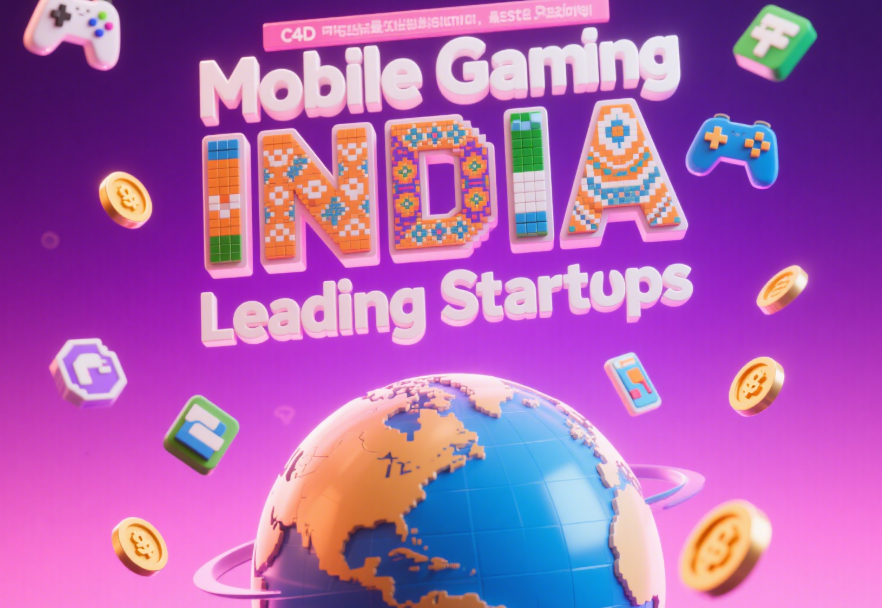India’s mobile gaming scene has exploded into a $3 billion powerhouse (2023), driven by 650 million+ smartphone users and a youth demographic (60% under 30). At the core of this transformation are Mobile Gaming India Leading Startups—agile, innovative firms redefining user engagement, monetization, and global competitiveness. This article unpacks who these startups are, their growth hacks, and why they’re poised to lead India’s charge in the global gaming arena.
Why Mobile Gaming India Leading Startups Are Dominating the Market
To understand these startups’ impact, let’s first map the ecosystem.
Market Size & User Behavior: A Perfect Storm
India’s mobile gaming revenue hit $3B in 2023, with a 28% CAGR (2020-2023)—outpacing the US and Europe. Key trends fueling Mobile Gaming India Leading Startups:
- Demographics: 75% of gamers are under 35, hungry for fresh, relatable content.
- Affordability: $0.10/GB data rates and cheap smartphones make gaming accessible to Tier 2-3 cities, which now drive 45% of downloads.
- Localization Demand: 68% of players prefer games with regional language support or cultural nods (e.g., cricket, festivals).
What Defines a “Leading” Startup in This Space?
Not all mobile gaming firms qualify. Mobile Gaming India Leading Startups share three traits:
- Tech Innovation: AI-driven personalization, cross-platform play, or Web3 integration.
- Revenue Diversification: Balancing ads, in-app purchases (IAPs), and subscriptions.
- Community Building: Social features (clans, UGC) that boost retention.
Spotlight: Top Mobile Gaming India Leading Startups Transforming the Industry
Three startups exemplify the ambition and ingenuity driving India’s mobile gaming boom:
GameSpark: Hypercasual with a Cultural Twist
Founded in 2020, GameSpark is a poster child for Mobile Gaming India Leading Startups targeting hypercasual audiences (70% of India’s mobile gamers). Its hit Rangoli Rush—a puzzle game using regional art—hit 50M downloads in 6 months.
Why It Stands Out:
- AI-Powered Retention: Machine learning adjusts difficulty in real-time, lifting retention by 35% (vs. industry avg. 20%).
- Vernacular Reach: 12+ Indian languages make it a favorite in non-English markets.
NexusPlay: Social RPGs That Build Tribes
NexusPlay (2019) dominates multiplayer RPGs with Mythical Realms, a game where players form clans, trade resources, and compete in UGC tournaments. With 20M MAUs, it’s a prime example of Mobile Gaming India Leading Startups leveraging social dynamics.
Key Innovation:
- Clan Economies: Players earn in-game currency by collaborating, doubling session lengths.
- Cross-Platform Play: Seamless mobile-to-desktop switching cuts churn by 25%.
PixelVerse: Web3 Gaming for the Mainstream
Launched in 2021, PixelVerse merges blockchain with mobile gaming, letting players own NFT assets (e.g., character skins) and trade them. Its Crypto Raidershas 500K monthly users—proof that Mobile Gaming India Leading Startups can pioneer niche tech.
Disruptive Edge:
- Play-to-Earn (P2E) Lite: Free-to-play with optional NFTs avoids regulatory red tape.
- Community Governance: Token holders vote on updates, fostering loyalty.

Comparative Insights: What Separates Mobile Gaming India Leading Startups From the Pack?
| Startup | Focus Area | MAUs | Revenue Mix | Unique Edge |
|---|---|---|---|---|
| GameSpark | Hypercasual | 8M | Ads (60%), IAPs (40%) | AI-driven personalization |
| NexusPlay | Social RPG | 20M | IAPs (70%), UGC (30%) | Clan economies & cross-play |
| PixelVerse | Web3 Gaming | 500K | NFT Sales (15%), Premium | Blockchain asset ownership |
3 Lessons from Mobile Gaming India Leading Startups for Aspiring Entrepreneurs
1. Localize Beyond Translation
Top startups embed culture, not just language. GameSpark’s Diwali Dashevent saw DAUs spike 200% in 2023 by integrating festival art and rewards.
2. Monetize Without Annoying Users
CROWN11, a Mobile Gaming India Leading Startups success story, uses a 40% ad, 50% IAP, and 10% subscription model. This balance keeps users engaged while generating steady revenue. Explore CROWN11’s strategy here.
3. Leverage Data to Predict Churn
NexusPlay’s “Retention Score” algorithm flags at-risk users and offers personalized rewards (e.g., extra lives), slashing churn by 30%.
Challenges & the Road Ahead for Mobile Gaming India Leading Startups
Regulatory Hurdles
India’s 2021 IT rules mandate KYC for real-money gaming, forcing startups to invest in compliance tech—a small price for long-term trust.
Future Opportunities
- Cloud Gaming: 5G rollout (2024) will let startups like PixelVerse test cloud-based RPGs, reducing device dependency.
- Esports Expansion: NexusPlay plans a 1MannualtournamenttotapIndia’s150M esports market.
Conclusion: Mobile Gaming India Leading Startups Are Rewriting Global Rules
From hypercasual hits to Web3 experiments, Mobile Gaming India Leading Startups are not just growing—they’re setting benchmarks for localization, tech, and community. As 5G and AI advance, these firms will likely lead India’s charge to become a global gaming hub.
For those eager to learn from the best, platforms like CROWN11 are redefining user engagement. Discover their innovative approach at https://www.crown11app.com.
FAQs About Mobile Gaming India Leading Startups
Q: What makes Mobile Gaming India Leading Startups different from global competitors?
A: They master cultural localization, leverage affordable data, and blend local traditions (cricket, festivals) with modern gameplay.
Q: Which of these startups has the highest growth potential?
A: Web3-focused PixelVerse is projected to grow at 45% CAGR (2024-2027), though hypercasual leader GameSpark still dominates user numbers.
Q: How do these startups handle regulatory challenges?
A: By investing in compliance tools (e.g., KYC systems) and focusing on non-real-money games where possible.
Q: Can small startups break into this space?
A: Yes—by targeting niche audiences (vernacular content, regional IP) and using India’s 5G infrastructure for cloud gaming experiments.











